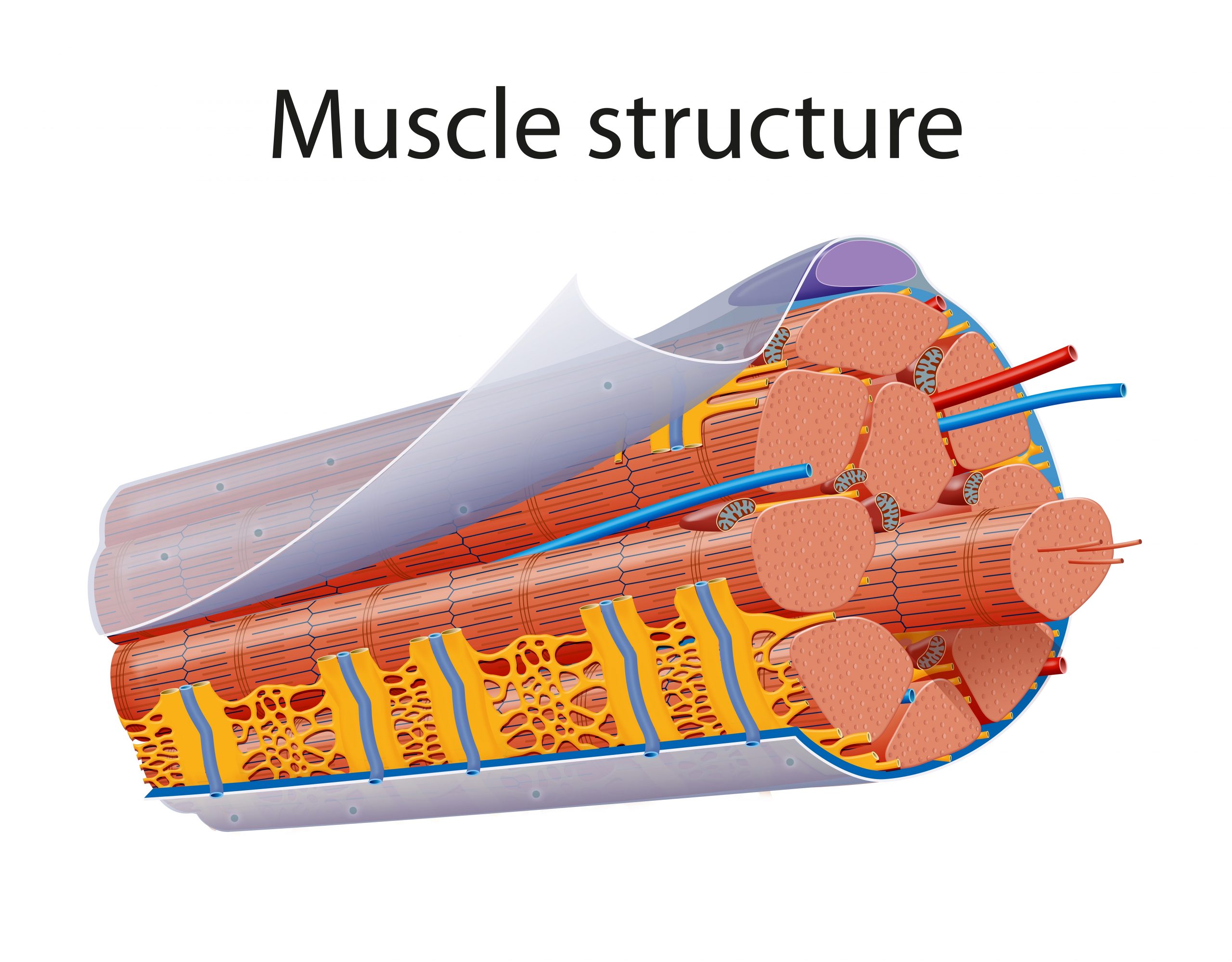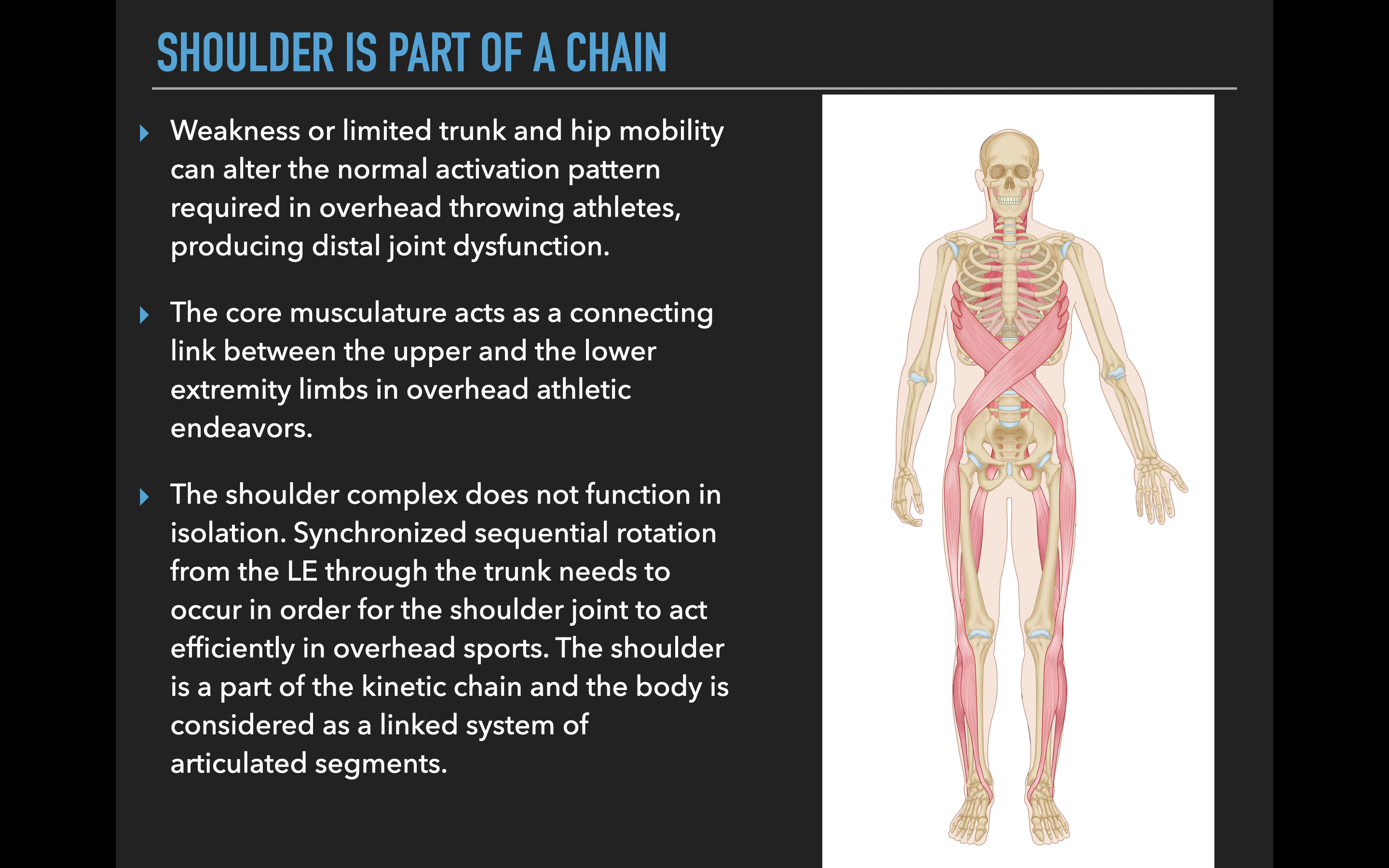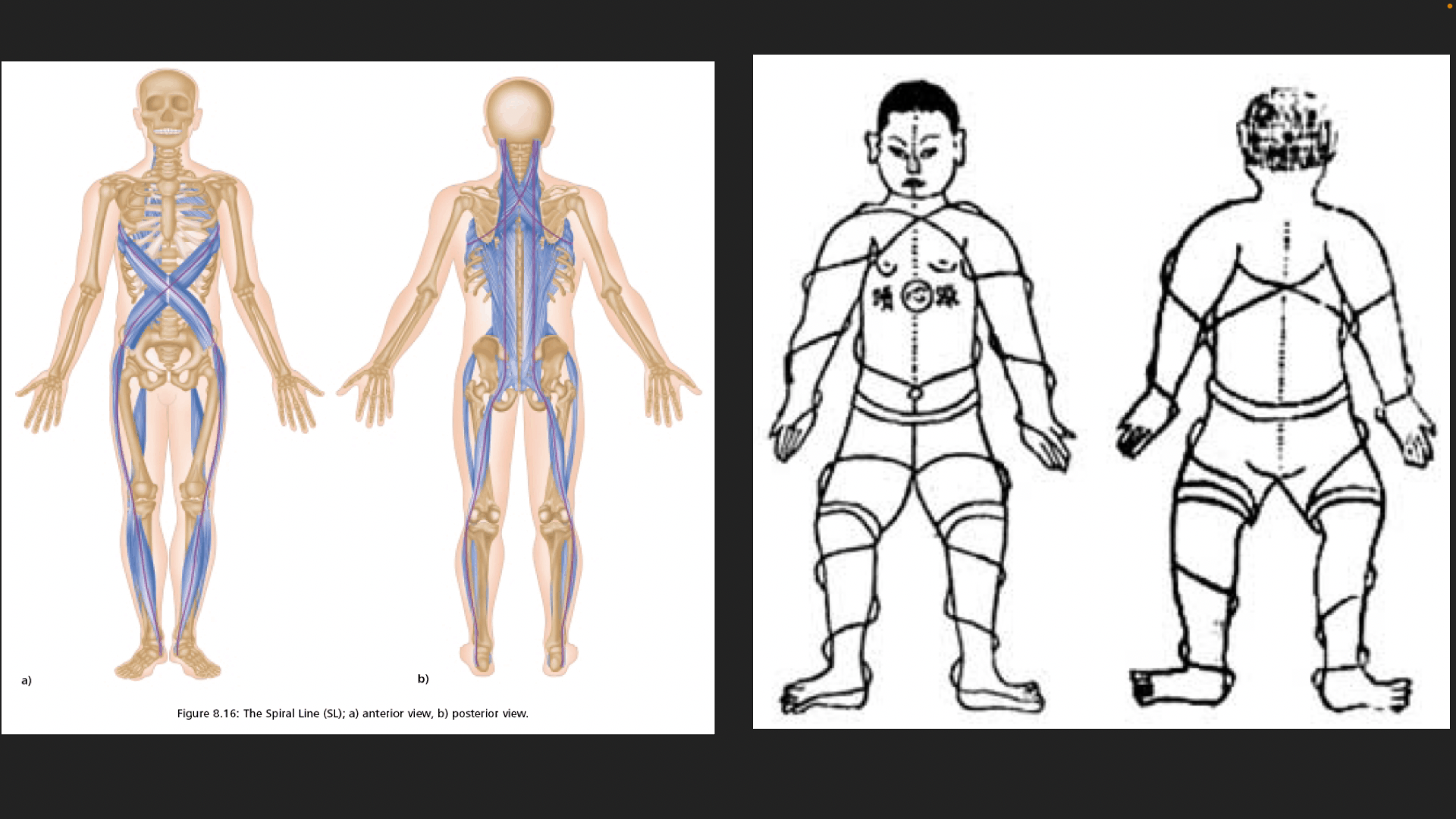The New World of Training Fascia
2024-06-24
If you have been paying attention to fitness at all, at some level or another you probably have heard someone tell you that you need to work on your fascia! It might cause one of two reactions, one is to dismiss the idea of “another” fad training idea or, the belief that everything you do and every issue you have is created by fascia. So, what is the truth? Is this something you should care about and how does it impact your training?

That “white stuff” covering the muscle is fascia
While there is WAY more discussion about fascia and it impact upon our movement, strength, and resilience, it actually isn’t a new idea on several levels. The idea of a “spiral web”, connective tissue that integrates our ENTIRE body so that we can be more efficient and stronger may sound like a new idea, but there is evidence that this can be traced by to work in the very early 1900’s. In 1903 Lovett and then in 1950 Dart introduced the concept of a spiraling movement system governed by muscle and joint actions.

One of the leading researchers and experts on myofascial systems is Andry Vleeming. His work on myofascial system really set forth the realizations that these “sling systems” are very important to our movement and ability to perform and be injury resilient. Dr. Vleeming was one of the first to off the idea of an anterior and posterior oblique sling system clearly provides an insight as to how forces cross the pelvic junction in front and behind the body.
I first learned about these sling systems from renown physical therapist, Diane Lee’s book, “The Pelvic Girdle” in the late 1990’s. It took me about 10 years to really understand how this could all be applied to training and how understanding fascia makes training smarter and more effective/efficient. As much good information there is about fascia and its impact there are also two main problems.
You might see some people say things like “oh, well there is fascia but it doesn’t really change anything we would be doing.” This is COMPLETELY incorrect. In better understanding these fascial connections we see how our strength training could be better served by challenging these slings to both help us produce force, but create greater stability at the same time. As physical therapist, Jessica Bento shows below, this applies to concepts like how to optimally perform back exercises like rows. In integrated the feet, the hips, and the core, we tap more into these fascial slings and developing strength, movement skills, and stability that have better carry over to the real world and sport.
View this post on Instagram
Understanding how fascia works allows us to see why dysfunction in an area of the body may be coming from another place. No matter how much bodybuilding wants you to believes the science is TOO overwhelming, the entire body is connected pretty much from toes to head (we go from the ground up;).
The other issue around training fascia comes from those that will create wild exercises in the name of training fascia. You can’t really train fascia separately from muscles (although you can do some training like plyos to enhance the elastic power of fascia) so, every exercise DOES train fascia. As explained in this 2012 paper, “The anterior-posterior serape (APS) model can provide a practitioner with an easy method to follow the force-generation patterns the body uses to perform just about any activity, from running to throwing a ball, to picking up a barbell (e.g., deadlift). The batting motion is used to illustrate how the body works with the APS.”
So, we don’t need crazy exercises to train our fascia, in fact, I often think DVRT is the most logical way to progressive challenge how fascia helps us with strength and stability at the same time. Starting in stable environments and progressively challenging them with altering body, load position, and planes of motion allow us to HIGHLIGHT (not isolate) specific myofascial chains.
View this post on Instagram
Cory Cripe shows how to combine these elements into really dynamic fitness training that allows us to maximize what we know about fascial slings and movement along with training plenty of muscles at once.
There is another aspect of training where understanding fascia is really helpful and that is improving mobility and movement efficiency overall. If you have a lot of fascial restrictions it can not only make movement more difficult and less efficient where you produce less strength, but you are more prone to developing issues like myofascial pain. It has been estimated that 95% of chronic pain conditions have a strong myofascial component to them. That is why many mind-body practices have been recommended to help improve movement and decrease these myofascial trigger points.

Ancient wisdom in many movement practices like yoga, Tai Chi, and qigong were actually rooted in what science would now call myofascial systems. We can now combine science and ancient practices into better systems of teaching how to resolve many of these issues with fascia and restoring optimal movement and decreased aches/pains. You can see some examples in what I teach below.
Fascia is something we should ABSOLUTELY be aware of in our training however, it isn’t mystical and can benefit from the same ideas of progression that would allow us to build a better and more resilient body for any goal. Understanding fascia allows us to better appreciate why these concepts of functional training like we teach in DVRT, PKM, LIFT, and MIM are so effective as well as why we don’t get fixated on individual muscles.
You can learn more saving 25% off our online Masterclasses HERE and also get 2 corrective exercise programs for FREE with code “online”. Also don’t miss our FREE Fascia Training Webinar next Thursday the 19th at 3pm EST HERE
© 2025 Ultimate Sandbag Training. Site by Jennifer Web Design.







